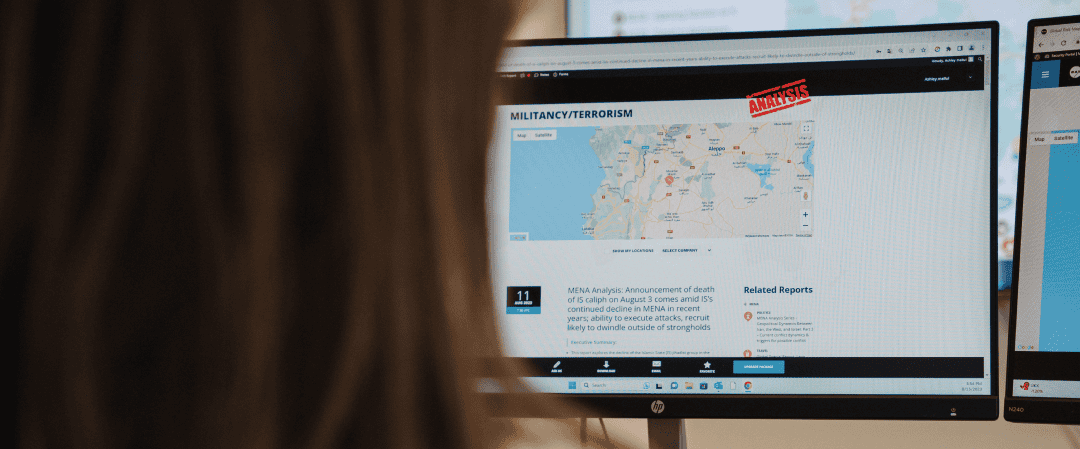For over a decade, X has served as one of, if not the, key sources of information for the private intelligence and security sector, with many of the research and alerting systems used throughout the industry heavily relying on the platform. However, recent shifts in its user base and broader changes in the social media landscape have driven significant fluctuations in activity. With this, it is important to assess how these changes may affect the sector’s ability to monitor both breaking stories and assessing longer-term trends.
Reports indicate certain factions of the X user base have or intend to leave the platform, along with a growing number of accounts becoming dormant. While some demographics, particularly longer-term or politically right-leaning users, are more likely to remain active, a growing number of high-profile contributors—including journalists, academics, and activists—are departing, along with their followers and other, more casual users, taking with them valuable first-hand reporting and reducing the diversity of perspectives.
This potential loss of sections of the user base has the potential to transform the nature of the content on X, with discussions increasingly confined to smaller, ideologically similar communities. As a result, the platform risks becoming another echo chamber, where the diversity and credibility of information decline significantly. Topics outside the interests of remaining users are at risk of being overlooked, leading to blind spots in emerging issues or areas of strategic importance. The departure of certain voices diminishes the availability of reliable, real-time intelligence, and narrows the scope of useful information for intelligence and security professionals to threats emanating from right-wing ideologies, while those from the left go missed as they migrate to other platforms. For example, climate activism and anti-capitalist movements are already under-represented on the platform, with more departures expected. Additionally, with the political polarization often mirroring other geographic, societal, or educational divides, topics of interest among these sectors may also disappear from the platform, such as student protests.
Beyond the activists and high-profile individuals, non-regular users who in recent years may have posted something unusual or shocking on X, such as a shooting or attack in their local area, are increasingly likely to do so on other platforms like Instagram and TikTok. This is compounded by younger social media users increasingly preferring primarily visual platforms, with text being a secondary or supporting communication method. Given that many of the currently established tools and search methodologies remain text-focused, this change also poses a challenge, with the drive to improve visual, as well as audio, search options already underway, with varying results and still being comparatively expensive. That TikTok is facing potential bans and restrictions in multiple countries may further complicate efforts to monitor potential threats and breaking incidents.
Along with the overall drop in users on X, the change in content and credibility of users poses a challenge to the tools and platforms that have spent years fine-tuning algorithms to assess posts and users to decide which stories have reached the critical threshold to push to users. This is compounded by 90% of all posts on X reportedly coming from 10% of users, with many others being passive or even dormant, as well as the significant issue of bot and avatar accounts.
Simultaneously, the diffusion of users across alternative platforms such as BlueSky, Mastodon, and Threads, as well as established spaces like Facebook, Instagram, and Telegram, complicates monitoring efforts. This is compounded by much of the information on these platforms being private or otherwise inaccessible via regular APIs that enable big data scraping to secondary tools, with this even becoming a selling point for those wishing for greater anonymity. This will require either the development of niche tools for specific platforms or more resources being used toward manually searching these platforms.
Ideologically specific or region-specific platforms, such as Gab, VK, WeChat, and 4Chan, are also drawing users, further fragmenting the online information environment. This decentralization requires the intelligence and security sector to adapt quickly, expanding its scope and recalibrating tools to track critical voices and trends across multiple platforms.
Despite these challenges, the evolving landscape presents opportunities. The need for recalibrating algorithms and expanding platform coverage encourages innovation in our OSINT methodologies. Analysts must critically evaluate their current tools to ensure they can adapt to this new environment and avoid the pitfall of relying solely on the most easily accessible sources. Where existing systems fall short, manual monitoring may be necessary, though practitioners must weigh the cost against the benefits to avoid inefficiencies and redundancies. Already, people are chasing the “new” platforms, instead of asking whether they are relevant to the task at hand. For instance, risks emanating from a NIMBY community group mainly consisting of older users in Western Europe are less likely to require active monitoring of TikTok or VK compared to Facebook, X, and maybe Instagram.
The shifts in X and the wider social media arena underscore the importance of maintaining a flexible, diverse approach to intelligence gathering. By identifying where relevant sources are moving, recalibrating analytical tools, and addressing biases, the sector can mitigate the risks posed by these changes. While X may no longer be the one-stop shop it once was, it remains a valuable, if increasingly specialized, resource. The intelligence and security community must adapt to this evolution, leveraging new platforms and adapting to a decentralized information ecosystem to maintain a comprehensive and accurate understanding of both breaking developments and longer-term trends.
















